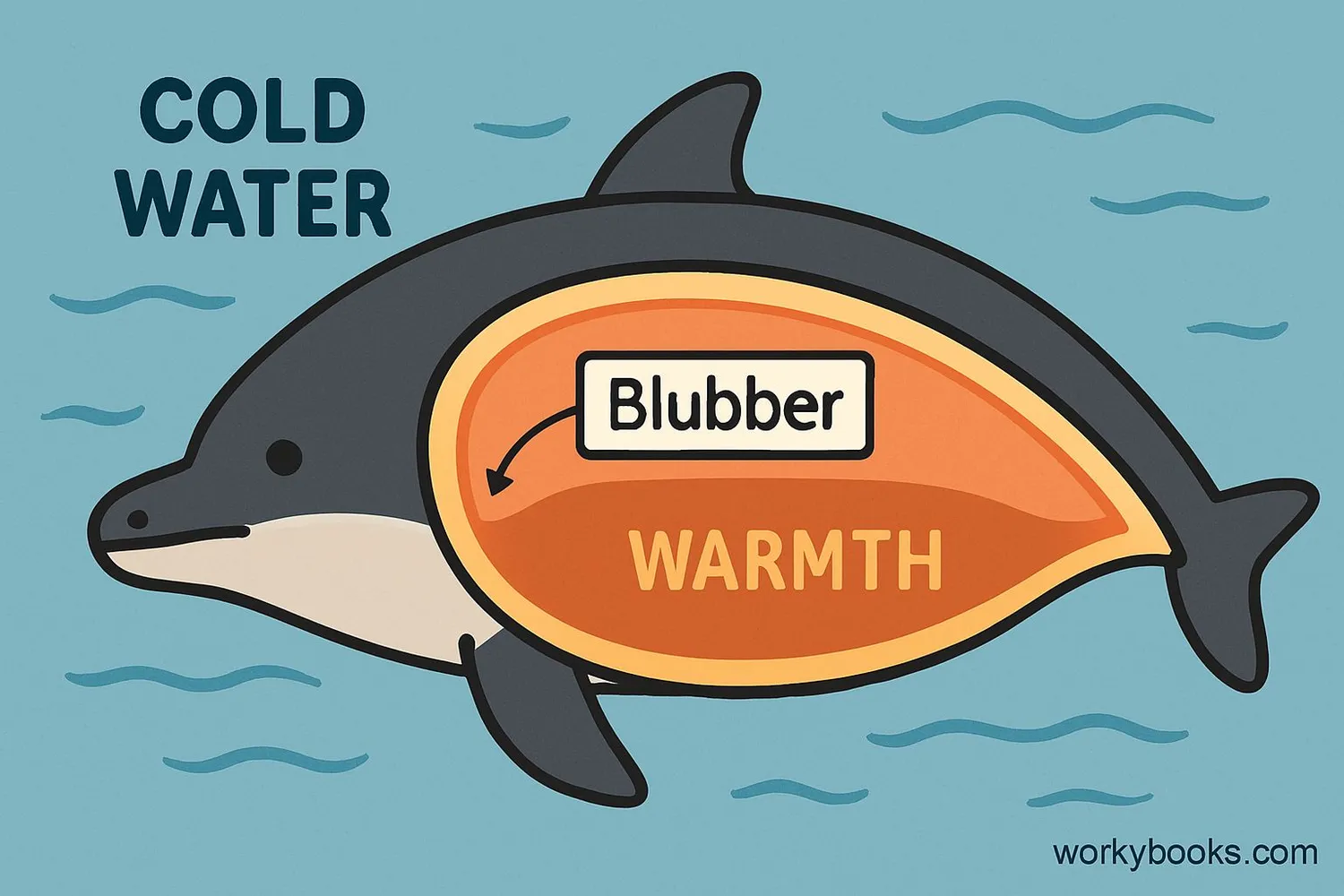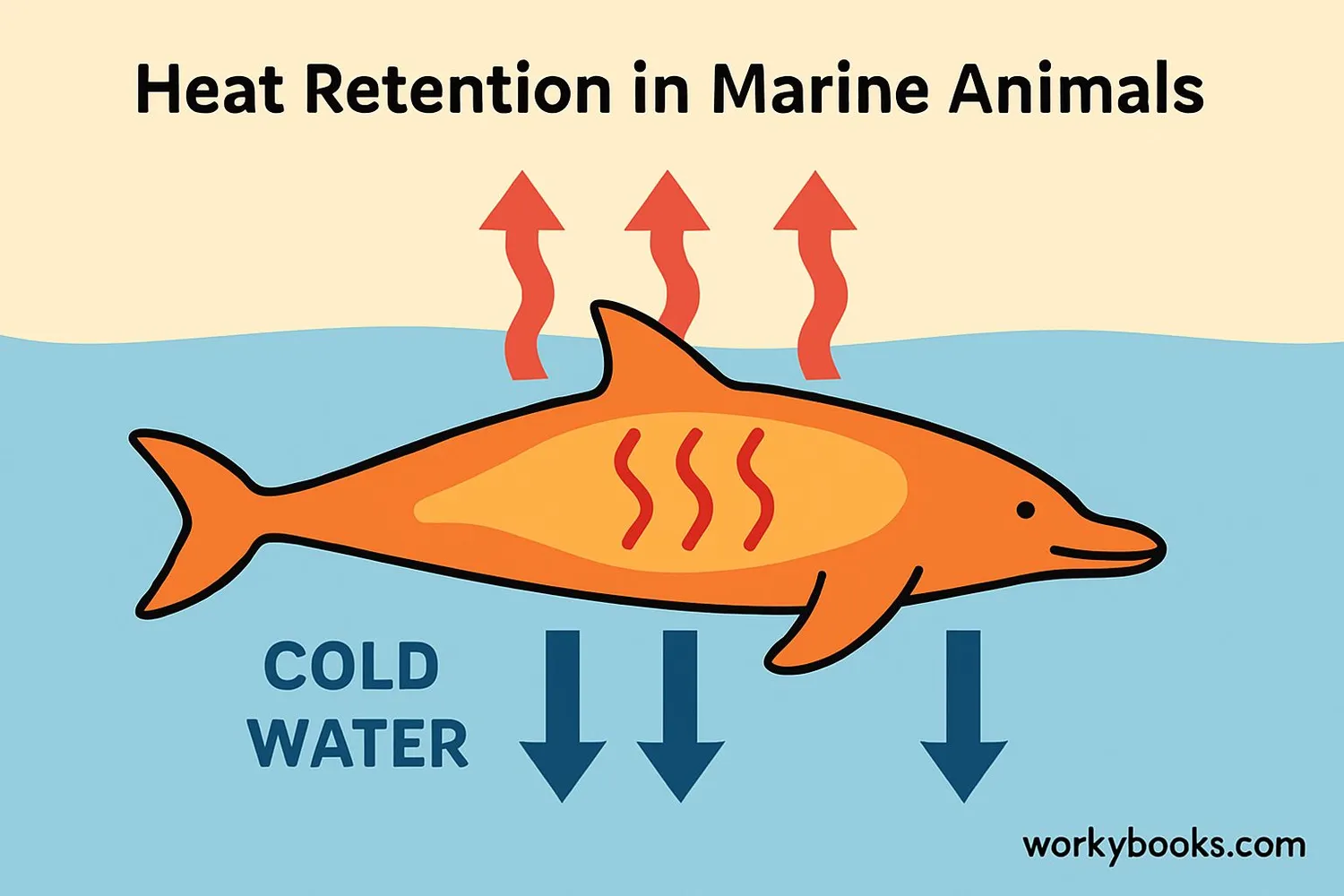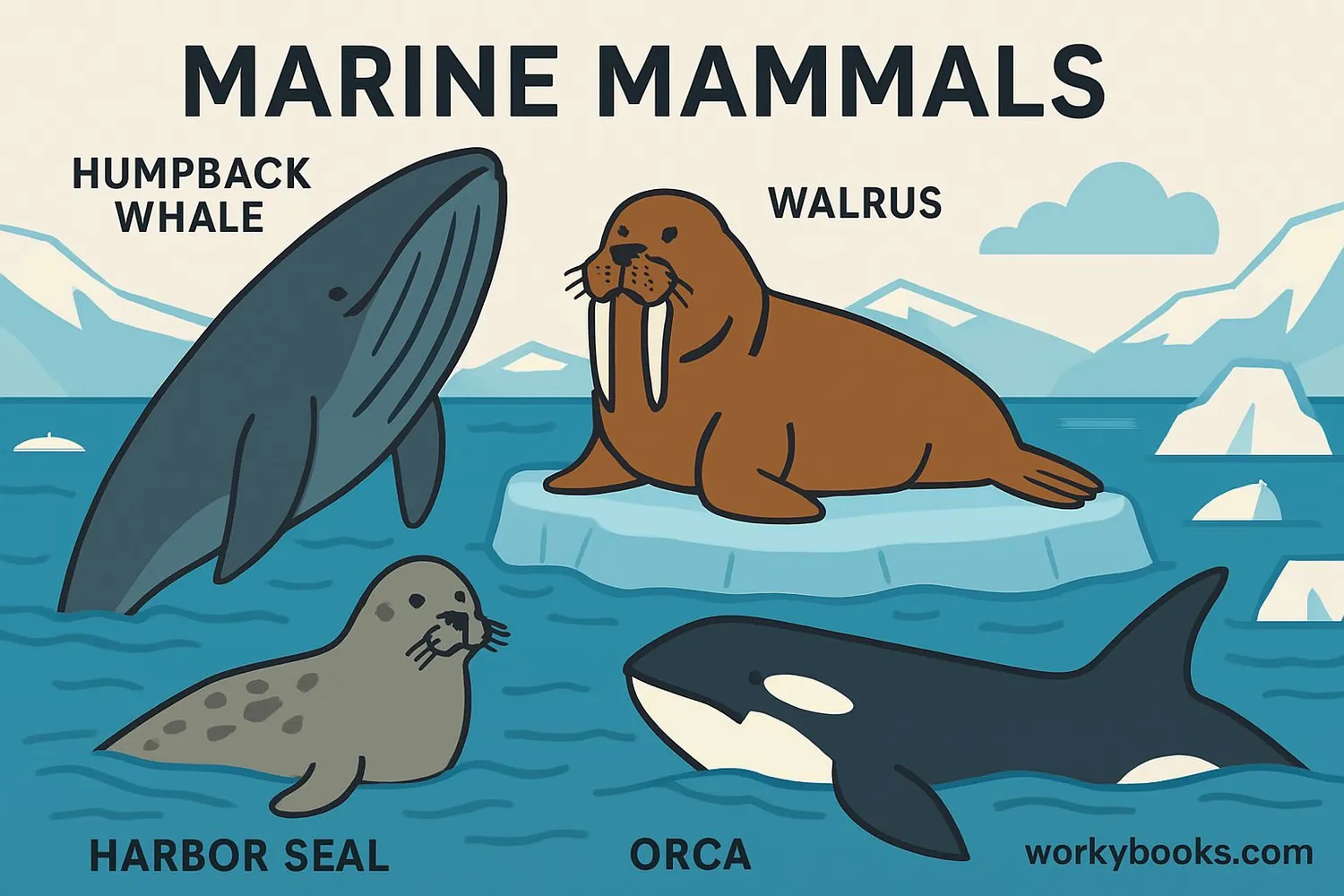Blubber - Definition, Examples, Quiz, FAQ, Trivia
Discover how marine animals stay warm in freezing waters
What is Blubber?

Blubber is a special thick layer of fat found under the skin of marine mammals like whales, seals, and walruses. It's not just ordinary fat - it's a unique adaptation that helps these animals survive in freezing cold water environments.
This amazing insulation layer can be several inches thick and makes up a large part of an animal's body. For example, a bowhead whale's blubber can be up to 20 inches thick! Blubber is packed with blood vessels and special fat cells that work together to keep animals warm.
Science Fact!
Blubber is so effective that marine mammals can maintain a body temperature of about 100°F (38°C) even in near-freezing Arctic waters!
Whales
Thickest blubber layer
Seals
Excellent insulation
Walruses
Protection from cold

Sea Lions
Energy storage
How Blubber Works

Blubber works like a super-efficient natural wetsuit that marine animals wear all the time! Here's how this amazing adaptation functions:
Insulation
Traps body heat and prevents it from escaping into cold water
Energy Storage
Stores fat for times when food is scarce
Buoyancy
Helps animals float more easily
Protection
Cushions against bumps and injuries
Streamlining
Creates smooth body shape for swimming
Blubber is much better at insulation than fur or hair in water. While air trapped in fur provides good insulation on land, water squeezes out the air, making fur less effective. Blubber works perfectly in water because fat doesn't conduct heat well - it slows down heat loss up to 100 times better than muscle tissue!
Adaptation Fact!
Some whales can adjust blood flow to their blubber to control heat loss - more blood flow to warm up, less to conserve heat!
Why Blubber Matters

Blubber is essential for the survival of marine mammals in cold environments. Here's why this adaptation is so important:
Thermal Regulation
Maintains body temperature in freezing waters
Energy Reserve
Provides nutrition during migration or fasting
Protection
Shields against cold and physical impacts
Without blubber, marine mammals couldn't survive in their cold habitats:
• Whales couldn't migrate long distances
• Seals couldn't dive deep in cold waters
• Walruses couldn't live on ice floes
• Polar bears (who eat blubber-rich seals) would lose their main food source
Blubber also plays an important role in indigenous cultures, providing nutrient-rich food and materials for tools, clothing, and fuel.
Blubber Quiz
Test your knowledge about blubber with this quiz! Answer all 5 questions to see how much you've learned.
Frequently Asked Questions
Here are answers to common questions about blubber:
Blubber Trivia
Discover amazing facts about blubber:
Weighty Matter
Blubber can make up to 50% of a marine mammal's body weight! A large whale might carry over 50 tons of blubber.
Ancient Adaptation
Blubber evolved about 30 million years ago when Earth's climate cooled and oceans became colder, requiring better insulation.
Human Uses
In the 18th-19th centuries, whale blubber was so valuable it was called "liquid gold" and was used to make lamp oil, soap, and cosmetics.
Not Just Warmth
In warm waters, some whales actually use their blubber to stay cool by directing blood flow to release excess heat!


